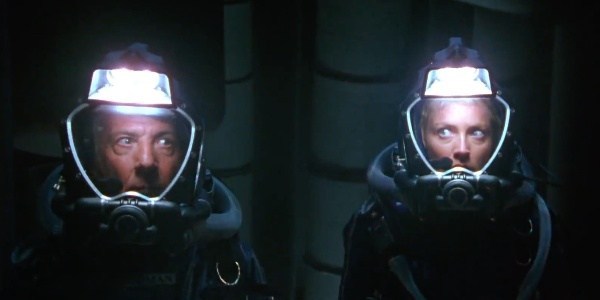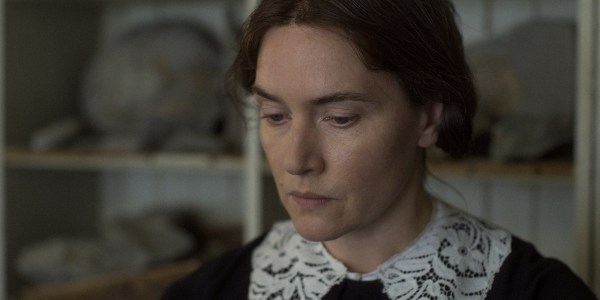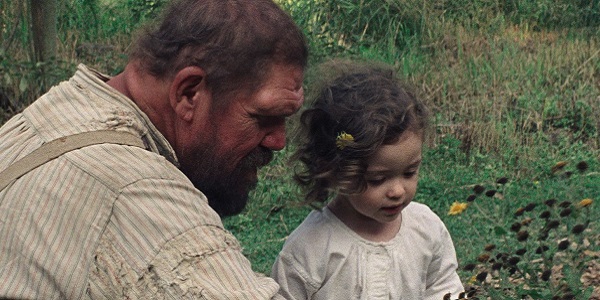Michael Crichton’s SPHERE And The Messy Allegory Of Pandemic
Film journalism spaces this year have been living in the past. That’s not a bad thing — just a fact. Few new releases and the malaise of coronavirus lockdown have inspired or outright forced many critics to revisit old favorites or to seek out films they hadn’t yet seen.
Many smaller publications — including this one that I love dearly — rely on freelance or unpaid writers and don’t have to produce new film reviews and up-to-date culture writing all the time. And some great pieces come from this model, especially this year. In August, The White Pube’s Zarina Muhammad wrote a review of Gilmore Girls that is charming, a little pissed off, and brilliant. And in October, for Bright Wall, Dark Room, Josh Spiegel wrote a funny, incisive essay about class in Columbo that’s inspired me to maybe eventually probably someday watch the show.
Culture writing, in general, this year seems to fall into several categories: the reappraisal of old, maybe forgotten, classics; guilty, “escapist” binge-watching; and the proclivity to reassess work in light of our current circumstances. Those last two slots have yielded some truly dreadful writing, most notably of the “red wine and chill” variety. In major newspapers, the culture sections are choked by pieces about “comfort cinema,” as though we can spend 2020 ignoring politics, blocking out anti-police protests, and disregarding the pandemic in favor of sipping Merlot on our beds and watching Sex and the City while “essential workers” bring us Chipotle. Yes, I am hypocritical here — I binged Disney Channel’s Dog with a Blog and wrote at length about the series and its politics back in July. But I can’t afford Merlot, I’m not paid for my criticism, and I don’t have the reach of your average writer for The Washington Post. Comfort cinema is a lazy form of culture journalism.
Still, I wanted to take this space to write a reappraisal of Sphere, of all things. On the surface, Sphere — a 1998 flop directed by Barry Levinson and adapted from Michael Crichton’s hit sci-fi thriller — is perfect for lockdown: Four scientists, trapped in a bubble thousands of feet below the ocean’s surface, slowly go mad. It’s an old favorite of mine, though it’s not at all a classic, and I’m sure only about five people even remember it exists.

The scientists are played by Dustin Hoffman, Samuel L. Jackson, Sharon Stone, and Liev Schrieber, and the burger-shop sci-fi story sends them to a deep-sea base where they find a crashed ship, an otherworldly sphere, and an alien being that communicates with them through the base’s computer. The ship is the first mystery solved — they think it’s extraterrestrial at first, but Hoffman finds a dead guy in the captain’s chair clutching a pack of Blue Diamond smokehouse almonds. Not only is the ship from Earth — it’s American! (I find the insinuation absolutely, stupidly invigorating: that well into the age of multidimensional space travel, Blue Diamond will remain in business producing smokehouse-flavored nuts.)
Sphere As Allegory
The film is very bad — Levinson’s heart clearly isn’t in the direction, the writing garbles everything interesting about Crichton’s novel, and the floor of the spacecraft glistens like the rug of a Chuck E. Cheese. Stone maintains this precisely applied, electric pink eye makeup throughout the entire film, even in the climax, when the base is rigged to blow and they’ve gone days without sleep. Peter Coyote plays the military commander in charge of the expedition, and he’s wonderful; he spends most of the film yelling at the other characters and then gets cut in half by a door. Life goals. He also says, of Stone’s character, “We’re 160 fathoms down, and now we’ve got a nutbag down here who can flip out and crack up,” a line that I quote to my friends and coworkers all the time. Their chats with the alien entity also lead up to the alien setting the place on fire and typing out, “I WILL KILL YOU ALL,” which, frankly, same.
Is it a good allegory for our pandemic times? I dunno; I recognize elements of Sphere. I live with my mother and little brother; our house, our own deep-sea habitat sealed off from “the surface.” I’d spent the end of 2019 and the start of 2020 making plans for my future, and in those six months of lockdown, I had to tear them all up, push back my plans to leave the country, hunker down, and not say anything that might make my mom angry. Some nights, our family Bananagrams games were all that kept us from one another’s throats. I had nasty arguments with my mom, she kicked me out of the house, and I was forced to severely reconsider whether or not staying at home was worth this — and that stress and anxiety isn’t even including the whole pandemic thing, or that I never received a cent of unemployment money from New Jersey state, or that all my job search yielded in six months was the worst of the worst unpaid internships. All of that unease and precarity I have willingly mapped onto Sphere, and now it’s stuck there, like earth, water, and dung packed together to form the walls of a house.
Sphere also captures, frenetically and clumsily, the paranoia that coronavirus has given us. Not just the paranoia of being at home, either. The bookstore and café where I work is a constant series of negotiations for the safety of the other people inside the store. Do I take another order or leave for two minutes to disinfect a vacant table before someone sits down? Do I have to change my gloves after this transaction? Is it safe to take my mask off in the breakroom to drink my coffee? Do I enforce the 6-feet rule, which everyone seems to forget as they huddle around the register, squinting to read the drink menu?

Front and center in the film, too, is how existential dilemmas are placed in the hands of ordinary people. Peter Coyote represents the military control over the scientists’ highly classified mission. He and several other personnel — including Queen Latifah in a throwaway role — manage the life support, comms, and maintenance around the habitat so the civilian scientists don’t have to. But because it’s Crichton, these support beams are the first to give way. The Queen is stung to death by jellyfish; the archivist, Edmunds (Marga Gómez) is pulverized by a giant squid. Coyote, of course, gets the door. And poor Liev Schrieber, the only guy who paid attention during the safety briefings, gets his face torched and dies when a gas tank explodes.
That leaves Hoffman, Jackson, and Stone in charge of the habitat, which they have no idea how to operate. When they aren’t plotting against one another, they’re trying to stop the deep-sea base from exploding. Watching the dissolution of the military structure governing the habitat forcing ordinary citizens like Hoffman to make life-or-death decisions feels very quintessentially 2020. It shouldn’t be left up to us — up to ordinary people — to prevent the spread of a deadly plague. Whether someone gets COVID or not shouldn’t depend on whether the barista (me) had enough time to wipe their table down before they sat, or whether I changed my gloves two or three transactions ago.
A Jaws State Of Mind
Stress, anxiety, claustrophobia, wanton mistrust, looming evil, and the collapse of institutional order color most of the pandemic allegories we’ve found this year. Sphere reminds me of two others in particular — John Carpenter’s The Thing, a film ridden with paranoia and fear of the unknown; and Among Us, the hit indie game about a crew of astronauts killed off one by one by an imposter in the ranks.

Jaws and Crichton’s golden egg, Jurassic Park, topped VOD this summer, as governors were warily reopening states. Bong Joon-Ho’s The Host, Invasion of the Body Snatchers, and most zombie movies would serve as effective epidemiological allegories, while Titanic and the recent horror films The Platform and Vivarium are just a few examples of works that tackle the social stratification the virus has brought to the forefront of political and academic conversations. And Hideo Kojima’s Death Stranding, with its post-apocalyptic setting and heroic deliveryman protagonist, has also invited its share of comparisons to our newfound reliance on Amazon Prime and DoorDash. In literary circles and publications, Albert Camus’ The Plague and Edgar Allan Poe’s Masque of the Red Death have made their rounds, too. Even stuff that have nothing to do with these themes has been reevaluated with COVID-tinted glasses — Deadline published a hilarious, asinine reappraisal of the forgotten Warren Beatty film Rules Don’t Apply, trying to pass it off as a catch-all allegory for the year.
Recently, I watched a short film called 2020 that tries to do the same thing. It’s a parody of 1917, so it’s engineered to look like one continuous shot — this time, though, the story’s two daring twenty-somethings (Colton Eschief Mastro and Michael Lieberman) live in Los Angeles and embark on a mission to 7-Eleven to buy some toilet paper. In doing so, they encounter every major 2020 plot point (Black Lives Matter protesters, LA wildfires, murder hornets, Donald Trump’s impeachment) and even a few minor ones (no one cares that Kanye ran for president).
With every reference, the film stops for a beat, hoping you’ll recognize what it’s doing and chuckle out of obligation. It’s basically gunning for the same audience that laughs at The New Yorker’s cartoons. (It came out Oct. 3, though, so there are thankfully no jokes about Nevada ballot counters.) As engaging, imaginative, and geeky as the short is, however, I don’t think it’s the perfect encapsulation of the year 2020 it is clearly trying to be.
From Epidemic To Entertainment
The future of entertainment, frankly, sucks. We’re going to see endless attempts to take this year and all its disasters and make sense of it, distill it into entertainment. COVID-focused episodes of Euphoria, Shameless, New Amsterdam, and The Good Doctor are forthcoming, The Connors has bad jokes about face masks now, and Meredith Grey has coronavirus. We have already seen sitcoms directly tackle quarantine, in Freeform’s Love in the Time of Corona, NBC’s Connecting…, and Netflix’s Social Distance, all shot to look like video chat calls.
These shows — like The New Yorker’s tedious carousel of hyper-literal political cartoons — prefer to depict the moment, building easy metaphors for our nation’s experiences with coronavirus, if they even bother with metaphors at all. But inherent in these attempts to capture a totality is a kind of sinister erasure. And that erasure is there every time a critic reevaluates a film or show as a pandemic allegory. By casting a single work of fiction as a metaphor for a vast, catastrophic event like coronavirus, the critic tends to sand off the edges or omit parts of the story that don’t adhere to the allegorical lens.

The bureaucracy, optics, and greedy, murderous politicians who contributed to the 286,000 deaths and counting in the U.S. from coronavirus are all elements that can be found allegorically in Jurassic Park, Jaws, and Sphere. But there can be no monolithic allegory for coronavirus, or for the entire year. The issues are too complex, too nuanced.
For instance, the disproportionate rates at which COVID-19 affects and kills African-Americans, Latinos, Hispanics, and Native Americans often escape coverage of the disease, when those statistics remain an enormously vital piece of the story. Many African-Americans in Chicago, where Black people comprise a third of the city’s population and yet half of its infections and three-quarters of its deaths, live in crowded living conditions with far less access to health care, insurance, and even basic testing. They more often work in “essential fields” and are more likely to have chronic health conditions than white people. One could make a solid argument that the U.S. government’s easing of COVID restrictions despite a mounting death toll can be attributed to the disease’s ripping through communities of color while white, middle-class communities are less adversely affected.
Conclusion: There Is No Three-Act Structure
Jaws, Jurassic Park, Sphere, The Thing, Among Us, Body Snatchers… these works all capture the basic themes of lockdown easily enough, but they’re the same repetitions and beats that the New Yorker and red wine and chill crowds will recognize and chuckle at. Paranoia. Pseudo-desperation. Psychological tumult. They don’t get at the messy, diasporic truths beyond those suggestions.
Championing these works as an allegory — marking Sphere as allegory — is a way we lazily try to compartmentalize the trauma of an ongoing crisis. “Let’s not talk about the world because projecting global events onto a fictional narrative is easier! Escaping into Netflix shows is intellectually responsible and fun! All hail the three-act structure!”
Matt Damon lives in Contagion. He quarantines with his daughter, he’s careful, and they survive. Then, the final sequence of the film tells us very succinctly and clearly how the virus entered the human population and made its way around the globe. We get our answers. And the credits roll. There’s comfort, finality, catharsis — an ending.
In her excellent piece “Allegory in the Time of Coronavirus” for Rabbit Hole, Lisa Yin Zhang writes, “All of this allegorizing is a way to hide. A way not to have to sort through the horror of a new world that ends at the front door — no workplace, no school, no friends except through screens — and the dearth of meaning that comes with it. To allegorize in this newly depopulated universe is to say: my pushing these sticks out of this window must mean something. My making tea every day must mean something. My continuing to get out of bed, day after day, must mean something. And it is a luxury: there are people who, while you ponder your ladle, must go outside to stock your grocery stores, to transport your goods.”
In the novel Sphere, there’s a great scene just after the scientists arrive at the deep-sea habitat. Before they’re even debriefed on their mission, the base’s cook, Rose, asks them for their favorite desserts. They have fresh New Zealand strawberries coming down via submarine, she tells Hoffman’s character, Norman. “Norman thought: I am a thousand feet beneath the surface of the ocean, and we are talking about whether we should have strawberry shortcake for dessert.”
Crichton’s writing, even when it’s about Beowulf or plane crashes or pirates on the high seas, always comes back to how shitty we are at dealing with circumstances outside our understanding. The scientists discover the sphere in the spacecraft, and they’re back in the habitat arguing about what alien life they might find inside. “As someone once said, you can’t break the arms of a creature that has no arms,” Norman tells them. The alien may not be anthropomorphic at all. It might not behave like a human. It might even live forever.
In allegories, we don’t learn anything about the monster. We just compare it to stuff we already know and have close at hand. It’s a desperate, sad coping mechanism. In our perpetual search for allegories, we crave comfort but we also crave answers. And the paradox is that we can’t find the right answers while we’re trapped in our comfort zones. Our cozy little dining bubbles in downtown Manhattan. Our comfortable majority-white suburbs, where COVID is more a daily roiling anxiety than it is an active threat. Sphere isn’t a good pandemic allegory, really, at all. But then again, neither is much else. We’re just looking for meaning, structure, and strawberry shortcake.
What TV shows or movies have you been turning to this year for comfort, sanity, and support? Let us know in the comments.
Does content like this matter to you?
Become a Member and support film journalism. Unlock access to all of Film Inquiry`s great articles. Join a community of like-minded readers who are passionate about cinema – get access to our private members Network, give back to independent filmmakers, and more.
Join now!





